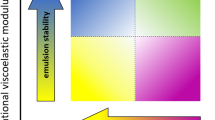Abstract.
Perfluorocarbon liquids (PFCLs) and heavy fluorocarbon liquids (HFCLs) are being increasingly used as soft tools during vitreoretinal surgery. However, since long-term intraocular tolerance is still unsatisfactory, at present complete removal at the end of surgery is recommended. With the aim to improve long-term intraocular compatibility and to enlarge the spectrum of clinical applications, modified HFCLs have been developed. HFCL-oligomers with a higher viscosity represent the latest perspective. All three groups of fluorocarbon liquids will be compared with respect to their physical and chemical properties, experimental and clinical results, and prospects for clinical applications. Common features of PFCLs, HFCLs and HFCL-oligomers are biological inertness, specific gravity higher than water, immiscibility with water or blood, and a high gas binding capacity. In PFCLs such as decalin, octane, or phenanthrene, all carbon atoms of the carbon backbone are completely fluorinated. In experimental and clinical use, emulsification, vascular changes and structural alterations of the retina have been described. By only partial replacement of hydrogen atoms by fluorine, the specific gravity of HFCLs is reduced, whereas lipophilic properties increase. Thus HFCLs are potential solvents for intraocular silicone oil remnants. However, after long-term application, side-effects are similar to those observed with PFCLs. Substances of this group, such as F6H6, F6H8, O44, and O62 are used intraoperatively and are currently being investigated for clinical long-term application. With the aim to avoid emulsification and to improve intraocular tolerance, we have developed HFCL-oligomers consisting of 2–4 HFCL molecules with increased viscosity. The oligomers were tolerated well in rabbit eyes for up to 4 months. In contrast to PFCLs or monomers, they did not emulsify nor show vascular alterations. ERGs returned to normal after removal of the oligomer from the eye. Histology of the retina showed mild alterations. Conclusion: according to physical properties, experimental intraocular compatibility and stability against emulsification, HFCL-oligomers are promising candidates for improved long-term tamponade of the lower retina. At present, indications for an application in human eyes have to be determined in clinical trials.
Similar content being viewed by others
Author information
Authors and Affiliations
Additional information
Electronic Publication
Rights and permissions
About this article
Cite this article
Kobuch, K., Menz, D., Hoerauf, H. et al. New substances for intraocular tamponades: perfluorocarbon liquids, hydrofluorocarbon liquids and hydrofluorocarbon-oligomers in vitreoretinal surgery. Graefe's Arch Clin Exp Ophthalmol 239, 635–642 (2001). https://doi.org/10.1007/s004170100330
Issue Date:
DOI: https://doi.org/10.1007/s004170100330




